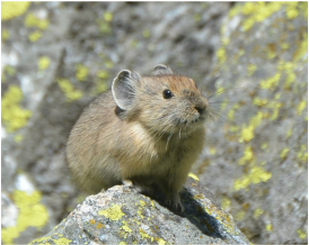Worldwide Pika Project

The smallest member of the rabbit family, the pika lives in high elevation, cold mountain environments, typically in boulder fields or above tree line. They are sensitive to heat, and cannot survive in temperatures warmer than 80 degrees F (25.5 C).
Studying the habits and movements of pikas can help us track the effects of climate change. A climate indicator, changes in their habitat can have a significant effects and often act as a warning to biologists.
“There’s enough evidence to say that pikas are going to be among the first mammals to be adversely affected by climate change,” said pika researcher Lucas Moyer-Horner in a story for Bioscience.
In fact, according to wildlife biologist April Craighead and research conducted by Dr. Erik Beever, pika populations are already going extinct within portions of their range, namely Nevada and the Great Basin.
More than 200 volunteers contributed over several years to our Pika project, recording habitat data on these energetic denizens of the high mountains. Our data was part of a decades-long global research effort which has been uncovering important lessons for the conservation of these and other animals.
We’re honored to be among the 70 co-authors on a paper published in Nature Climate Change and reported on by PBS. This study reveals that when it comes to surviving climate change, the key to a pika population’s survival is less a matter of genetics and more a matter of the ecological conditions they’ve encountered throughout life.
This has implications for conservation of pikas and other wild animals and plants.
In efforts to ensure that species survive amidst changing environmental conditions, individuals of different species may be relocated from one area for reintroduction to another. Previously, genetic characteristics or variety were held to be the most accurate predictors of survival and success. It’s now clear that in at least some situations, the past life history of the individuals may in fact bear the lion’s share––or in this specific case, the pika’s share––of impact.

Smith, Adam B., Erik Beever, et al. 2019. “Alternatives to genetic affinity as a context for within-species response to climate.” Nature Climate Change.
This map shows where Adventure Scientists hikers and climbers gathered pika data in North America and Asia.


Additional Pika Resources
Pikas in Glacier National Park, from Bioscience: “Silence of the Pikas“
